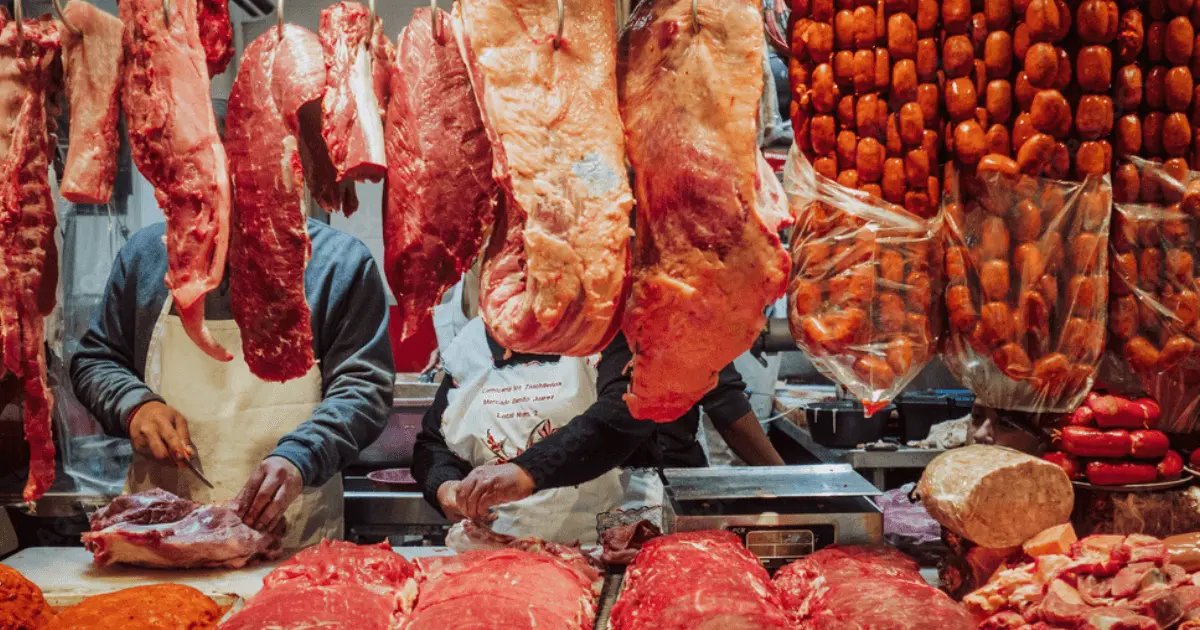Discover Fresh Cuts at Bagley Farms Meat Market Edwardsville IL for Your Following barbeque
Discover Fresh Cuts at Bagley Farms Meat Market Edwardsville IL for Your Following barbeque
Blog Article
Reveal the Art of the Butcher's Cut in a Modern Meat Market
In the ever-evolving landscape of contemporary meat markets, the butcher's cut has transcended its typical origins, merging old-time craftsmanship with modern practices. What really establishes the modern-day butcher apart is their capacity to build a much deeper connection in between customers and the origins of their meat.
Advancement of Butchery Techniques
The development of butchery methods mirrors an abundant tapestry of innovation and adaptation driven by developments in modern technology, changes in customer demand, and a much deeper understanding of meat science. Historically, butchery was a craft passed down through generations, with techniques refined over centuries to maximize return and taste. However, the industrial revolution introduced automation, transforming typical techniques and making it possible for massive processing.
The mid-20th century saw butchery techniques additionally refined by scientific insights right into muscle biology and meat aging, enhancing both inflammation and preference. Developments like vacuum product packaging and refrigeration extended item shelf-life, permitting butchers to branch out offerings and enhance quality assurance. This period also marked the increase of specialized devices, such as band saws and meat slicers, which enhanced precision and efficiency in meat handling.

The 21st century has presented electronic technology right into the butchery world. Digital systems currently help in tracking animal provenance and enhancing cuts to fulfill details customer preferences. Furthermore, a revival in artisanal butchery has arised, blending typical skills with modern expertise to deal with consumers looking for moral and lasting meat alternatives. This development underscores a vibrant interplay between practice and development, meeting contemporary demands while preserving the craft's heritage.
Comprehending Meat Cuts
Recognizing the intricacies of meat cuts is important for both butchers and consumers looking for quality and value. Each cut comes from a various component of the animal, passing on one-of-a-kind flavors, structures, and cooking approaches - bagley farms meat market edwardsville il. Mastery of these differences not just enhances culinary experiences yet additionally makes the most of the utility of each carcass. For butchers, exact cuts show skill and regard for the craft, making certain minimal waste and optimal yield.

Understanding muscle mass structure is crucial; muscles used a lot more regularly by the pet have a tendency to be harder and are best matched for slow-moving cooking techniques, while less-used muscular tissues, like those located in the loin, are a lot more tender and perfect for grilling or roasting. Knowledge with these differences equips consumers to make educated choices, boosting their cooking ventures.
Choosing Top Quality Meat
Choosing the appropriate meat entails more than just selecting a visually attractive item from the display. bagley farms meat market edwardsville il. The art of picking high quality meat needs a discerning eye and knowledge of particular qualities that represent quality and excellence. To start with, pay focus to the color; beef needs to have a brilliant, cherry-red tone, while lamb must exhibit a soft pink tone, and pork a light pink. This indicates the meat is fresh and hasn't been revealed to oxygen for also lengthy.
Secondly, bagley farms meat market edwardsville il think about the marbling, which describes the white flecks of fat within the muscle. Correct marbling is a key indication of inflammation and taste, as it melts throughout cooking, improving the meat's juiciness. Keep in mind, higher marbling commonly associates with premium high quality cuts, such as USDA Prime.
Texture is next page another crucial factor; meat ought to feel firm to the touch, not slimy or extremely soft. Furthermore, bear in mind the fragrance. Fresh meat should have a tidy, neutral smell, devoid of any type of sour or off-putting smells.
Combining Cuts With Cooking Approaches

Conversely, harder cuts like brisket and chuck roast are abundant in collagen, which breaks down into jelly when cooked gradually. These cuts are suitable for braising or slow roasting, enabling the meat to soften with time and develop deep, complicated flavors. Similarly, cuts such as brief ribs and pork shoulder prosper with slow-cooking approaches, where expanded cooking times change their durable structures into succulent recipes.
Lamb shanks and oxtail, which call for prolonged cooking to tenderize, are perfect candidates for stewing or slow simmering. These approaches coax out abundant, hearty flavors while keeping wetness. By comprehending the unique characteristics of each cut, chefs and home chefs alike can boost their culinary creations, making sure each meal is he has a good point both satisfying and memorable.
The Butcher's Function Today
Browsing the advancing landscape of the contemporary meat market, the butcher's function today expands beyond simple preparation of cuts. Contemporary butchers are cooking craftsmens, educators, and advocates for sustainable techniques.
In addition to crafting accurate cuts, butchers now engage straight with consumers, using cooking recommendations and tailoring choices to fit specific demands and preferences. Their proficiency in meat aging, marbling, and taste profiles equips customers to make educated choices, improving their cooking experiences. This tailored service exemplifies the butcher's advancing role as a trusted consultant in the cooking area.
In addition, butchers are essential in reducing waste, utilizing entire animals to produce diverse items such as sausages and supplies. This detailed method not just appreciates the animal however also straightens with contemporary sustainability objectives. In this way, the modern-day butcher embodies both custom and innovation, adapting to an ever-changing market while preserving the virtuosity and stability of their craft.
Final Thought
Proficiency in recognizing varied meat cuts and top quality indicators encourages butchers to supply enlightened referrals, aligning specific cuts with optimum food preparation approaches. By recognizing historical methods while embracing modern demands, the butcher's role remains vital in today's advanced meat market.
Report this page